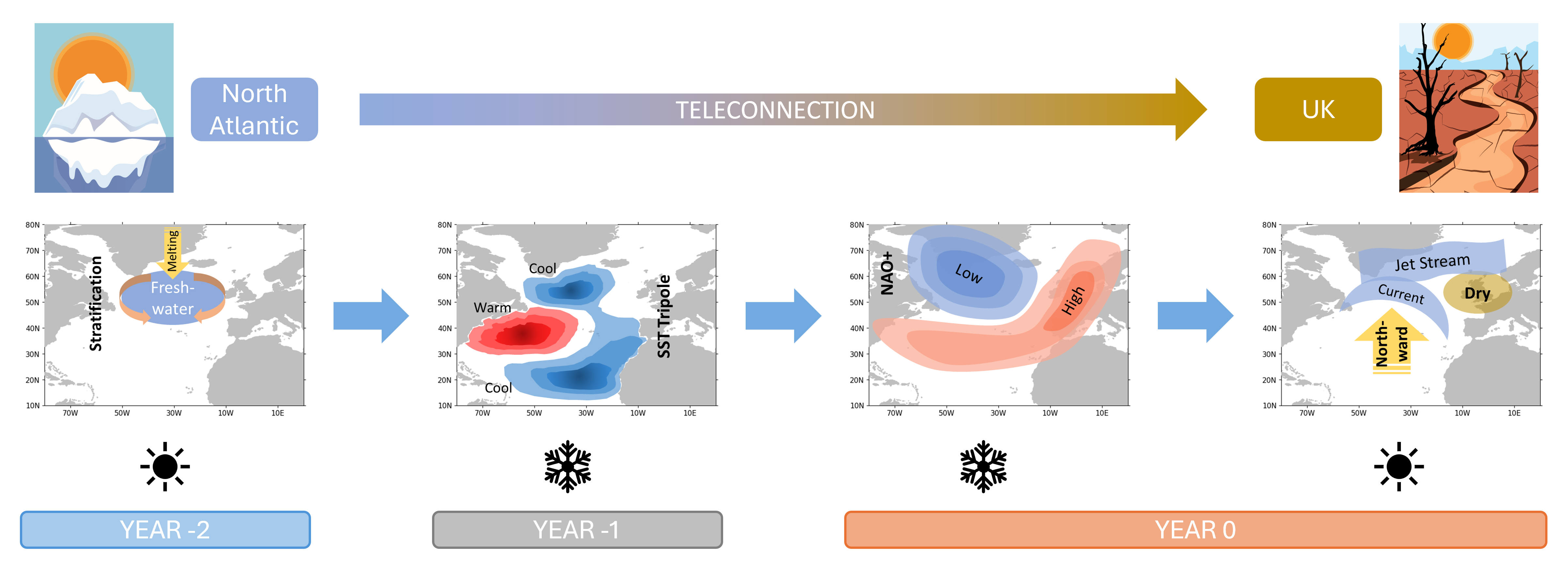Dr Amulya Chevuturi, a hydroclimate data scientist at the UK Centre for Ecology & Hydrology, discusses an exciting research finding that could help the UK better prepare for droughts...
As UK droughts become more common and severe due to climate change, finding their causes is important to predict them earlier and thus prepare for them more effectively. Our latest research reveals a link between the North Atlantic Ocean temperatures and summer droughts in the UK, with signs showing up as early as 18 months before the drought happens.
We found that specific patterns of sea surface temperatures in the North Atlantic, which are influenced by freshwater from melting ice, can set off a chain reaction. This leads to a series of conditions in ocean and atmosphere that ultimately shifts the usual path of storms (ie jet stream) from the UK, leading to drier summer months.
Using examples of four extreme UK summer droughts – 1976, 1995, 2018 and 2022 – we traced this pathway in detail, from ocean changes all the way to reduced river flows across the country.

Here is a summary of the sequence of oceanic and atmospheric changes that ultimately lead to drought conditions in the UK:
- Freshwater enters the North Atlantic Ocean, changing how the different layers of ocean mix.
- This forms patterns of cold and warm regions in the ocean surface.
- These ocean patterns influence the atmosphere and push the storm tracks north of UK.
- Fewer storms lead to less rain and lower river flows for the UK during summer.
This finding is very important because current seasonal forecasts for UK river flows are limited, that far in advance for summer.
Our work shows that there is a real potential to use these North Atlantic Ocean signals to predict drought conditions much earlier. Warnings with such long lead times, allow a greater window to prepare, whether by managing water supplies or planning what crops to plant and when.
Our findings are not just important for the UK, the same ocean-driven patterns may help predict hydroclimate extremes in other parts of Europe, too. So we are now investigating the impacts of these patterns on drought conditions across the continent..
For more information, please read the open access paper in Nature Communications Earth and Environment (DOI: 10.1038/s43247-025-02367-1)